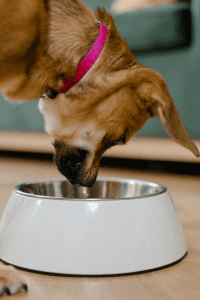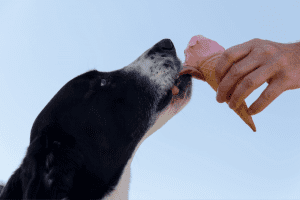You do your best to feed your dog a high-quality, nutritious diet. But what do you do when you begin to suspect that their food may be making your pet sick?
Just like humans, dogs can develop allergies at any point in their lives, meaning the food they’ve been eating without issue for years can suddenly trigger a reaction. Here’s what pet parents should know about how food allergies typically present themselves, and how to choose the right food for your canine companion.
Food allergies and food sensitivities are often used interchangeably, but they are distinct in important ways.
Allergies involve the immune system. When pets ingest a true allergen, their bodies treat the substance as a threat and react as they would to a virus or bacteria. This immune response causes inflammation that can be quite severe.
Food sensitivities, on the other hand, are typically milder and don’t trigger the immune system. They can build up over time and are often proportionate to the amount of the offending food your pet has eaten. Just like too much chocolate can lead to acne or a second helping of ice cream can bring on a stomach ache in humans, even dogs without allergies may require specially balanced diets to feel their best.

Because of their molecular structure, proteins account for almost all food allergies in dogs.
Compared to sensitivities, food allergies are quite rare, affecting about 0.2% of dogs. The most likely offenders include:
Both food allergies and food sensitivities can have fairly vague symptoms, many of which can have multiple explanations. Because reactions to the same allergen can vary from one pet to the next, getting to the root of the problem will require patience and observation. Keep an eye out for the most common symptoms.
Of all the body systems, food allergies are most likely to affect your dog’s skin. If your pet is rolling excessively in the grass or on the carpet, scratching their ears, or chewing their paws, check for:
Confusingly, reactions to fleas, mold, or seasonal allergies can have the same effect on skin, so be sure to consult with your vet to rule out other causes.
If you’ve noticed changes in your dog’s bathroom habits, their food may be to blame. Stress and overconsumption can cause short-term GI issues, but persistent problems warrant a closer look. Be aware of:
Sometimes, allergies and sensitivities affect pets in more subtle ways. If your dog is suddenly unusually lethargic, anxious, or even aggressive, they may be struggling to digest their food or hiding their pain.
 How Are Food Allergies & Sensitivities Diagnosed in Pets?
How Are Food Allergies & Sensitivities Diagnosed in Pets?Despite the popularity of at-home pet allergy tests, their accuracy is pretty dubious. Identifying the true source of an allergy or sensitivity requires pet parents to work closely with their vet and systematically monitor their dog’s diet.
Once your veterinarian has ruled out stress, parasites, and non-food environmental allergies, an elimination diet is the best way to pinpoint problematic foods.
The only way to definitively identify the source of an allergic reaction or sensitivity is to take any possible allergens out of your dog’s diet, reincorporate potential offenders one at a time, and watch closely for any reaction.
Your vet may recommend that you begin by feeding your pet only proteins that they’ve never eaten before, like salmon, rabbit, or turkey. They may also provide a prescription for hydrolyzed food that is made with proteins that have been broken down until they can’t be recognized by your dog’s immune system.
Once symptoms subside, your vet will provide a roadmap for testing different protein sources to see if they cause allergies to flare. Once you isolate the cause of your pet’s issues, you can choose a diet that meets their nutritional needs without inflaming their immune system.